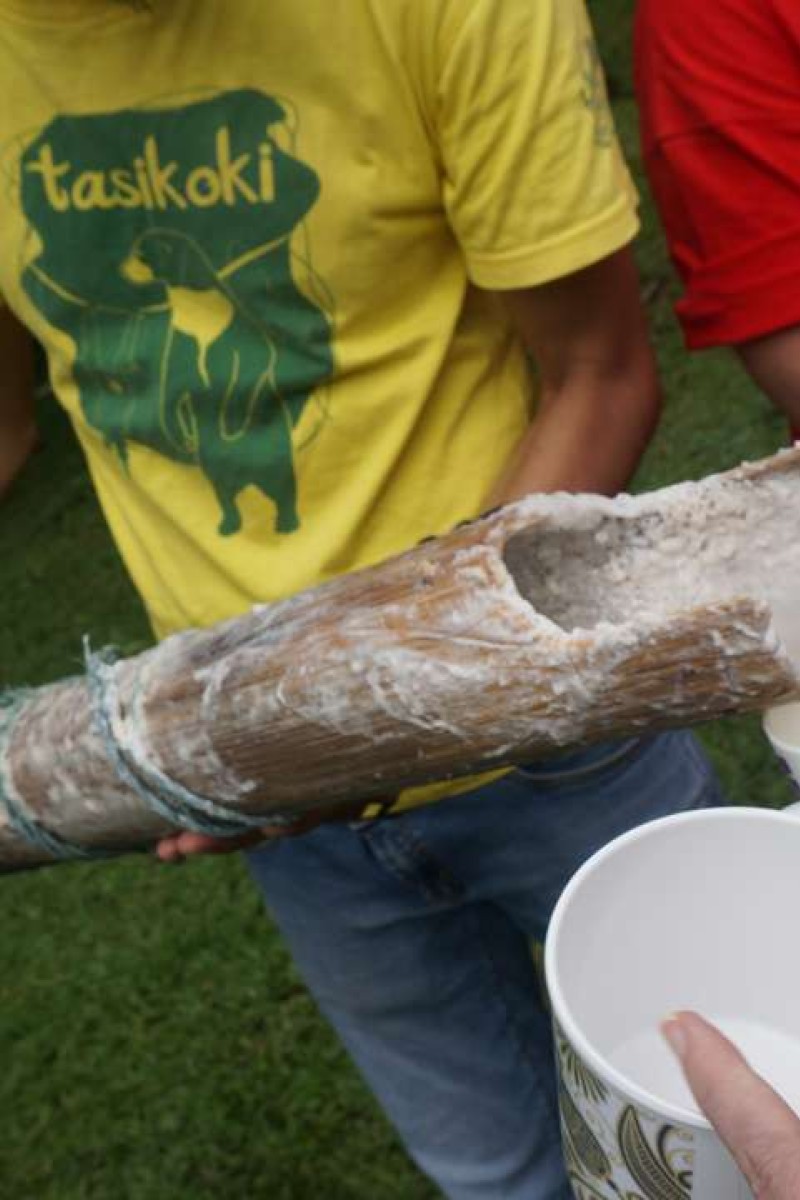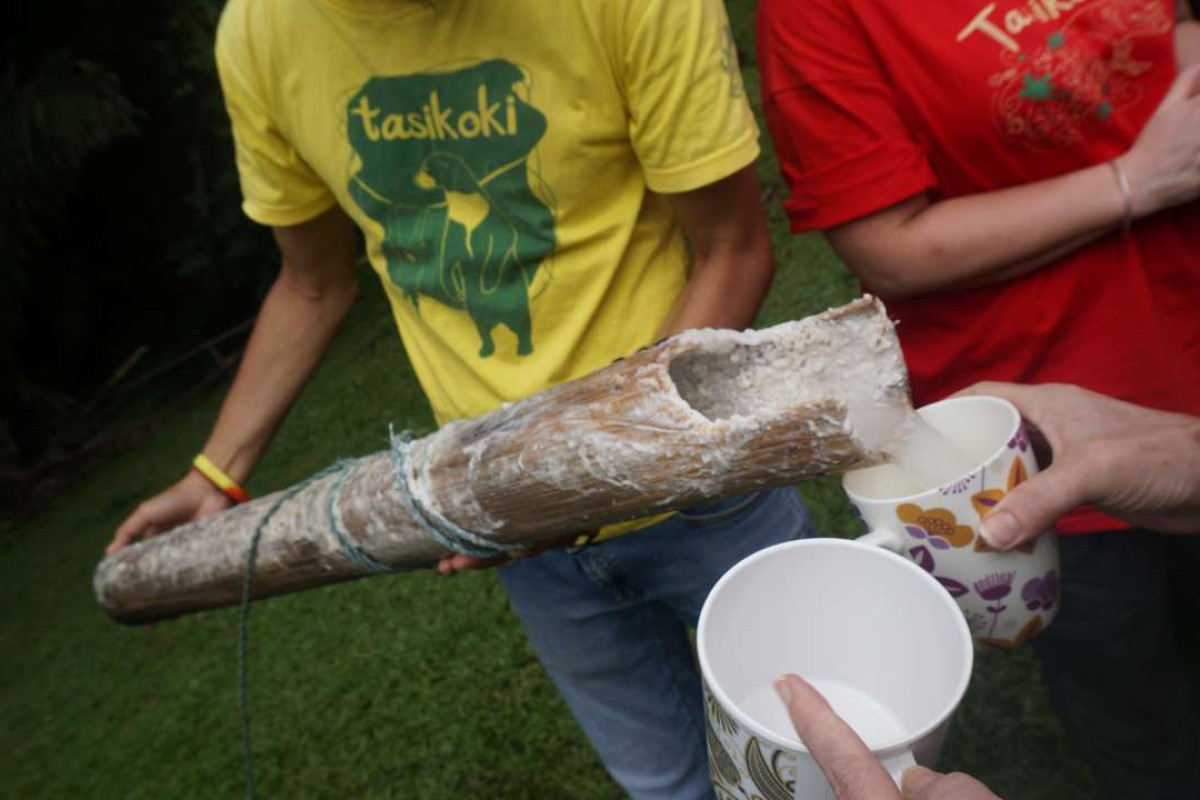
Sugar palm trees are magic, according to one man in Indonesia – and for him and the people that he employs in his factory producing sugar palm products, they kind of are
 What’s sugar palm juice like? Really sweet, we’ll bet.
What’s sugar palm juice like? Really sweet, we’ll bet. Deforestation, habitat loss, and climate change have been talked about topics for years now. While much work has been done on monitoring the extent of such environmental damage, viable solutions to these problems have seemed few and far between. This however, might be about to change.
In Indonesia, rampant deforestation by forest fires has been fuelled by the demand for more land in which to grow palm trees for palm oil. Unfortunately, this land grows on top of peat swamps, which are comprised of abundant organic material that releases a huge amount of carbon dioxide into the atmosphere when it burns.
Doctor Willie Smits, chairman and founder of the Masarang Foundation, has utilised the sugar palm tree (Arenga pinnata), a locally abundant species in North Sulawesi, to create a sustainable solution to the region’s environmental problems: a palm sugar factory. Since the Masarang Palm Sugar Factory’s opening in January 2007, the sugar palm products made have been vital in empowering the local people, providing them with employment and wages. These products are now being exported to places all around the world, including Hong Kong. “Sugar palm [trees are] the better, healthier alternative to palm trees for both the forest and the people,” Smits says.
Smits’ first encounter with these “magic trees” as he calls them, was during his marriage proposal to his wife in Indonesia in 1980. “The dowry was six sugar palms, not gold!” he recalls. “It was the first time I understood the value of sugar palms for the locals. Just six sugar palms can support a whole family. I thought, why not utilise that on a larger scale?”
Smits has dedicated 20 years of his life to planting these trees and researching their cultivation and growth. A big part of that meant sharing in the knowledge of the local people, which is passed down from generations. “The fire-resistant, flood-resistant sugar palm tree can produce alternative biofuel, wine, and sweet delicacies.” Smits says. What’s more, “the strong and high quality sugar palm fibres can used in infrastructure, cars, and construction.” There are, in fact, more than 60 different uses for the sugar palm.
So what sets it apart from its counterpart, the palm tree?
“The sugar palm must grow in a mixed forest,” Smits explains. “The tree needs ants for protection, fruit bees and flies for its flowers, but most importantly, it needs to grow with other tree species.” On the other hand, palm trees can only grow in a single monoculture, “a biological desert”, as Smits calls it. “Sugar palms have the power to rejuvenate forest diversity, and stabilise soil structure with its roots.”
The extraction begins with each local farmer being allocated his own sugar palm trees. They climb up a tall bamboo ladder twice a day – with the speed and agility of Spiderman – to tap into the tree sap with tall cylindrical bamboo holders, before boiling the juice to prevent fermentation. The juice is then transported to the Village Hub in the Masarang Palm Sugar Factory in Tomohon for further processing.
“The Village Hub simulates the way nature works; everything is a closed system,” Smits says. This is the key to the efficiency and success of the factory. Powered by geothermal energy, the factory recycles the waste steam, and utilises any waste products to create biogas, animal feed, and composting. “Nothing goes to waste, just like in the cycle in nature with the producers, consumers, and decomposers.”
The efficiency of this factory in making sure everything that can be used is used has been the reason for why it has been so successful in making profit. For one local sugar palm farmer, the existence of the factory has been of huge benefit to his family.
“Since I started tapping sugar palms ten years ago, I have made enough money to be able to send my two daughters to school,” he says. His eldest daughter is now studying at university, and his second daughter is in secondary school.
When he thinks about the future, Smits has no plans to slow down – he already has his sights on expansion. Although sugar palms can only grow in tropical regions, he is already working on building new factories in other areas to shorten the time it takes to transport sugar palm juice to the Village Hubs.
“We have so much to learn from nature; [we shouldn’t just] go for the short term benefits,” Smits says. “If we can do that, if people can learn to work with nature, that is when the real change happens.”